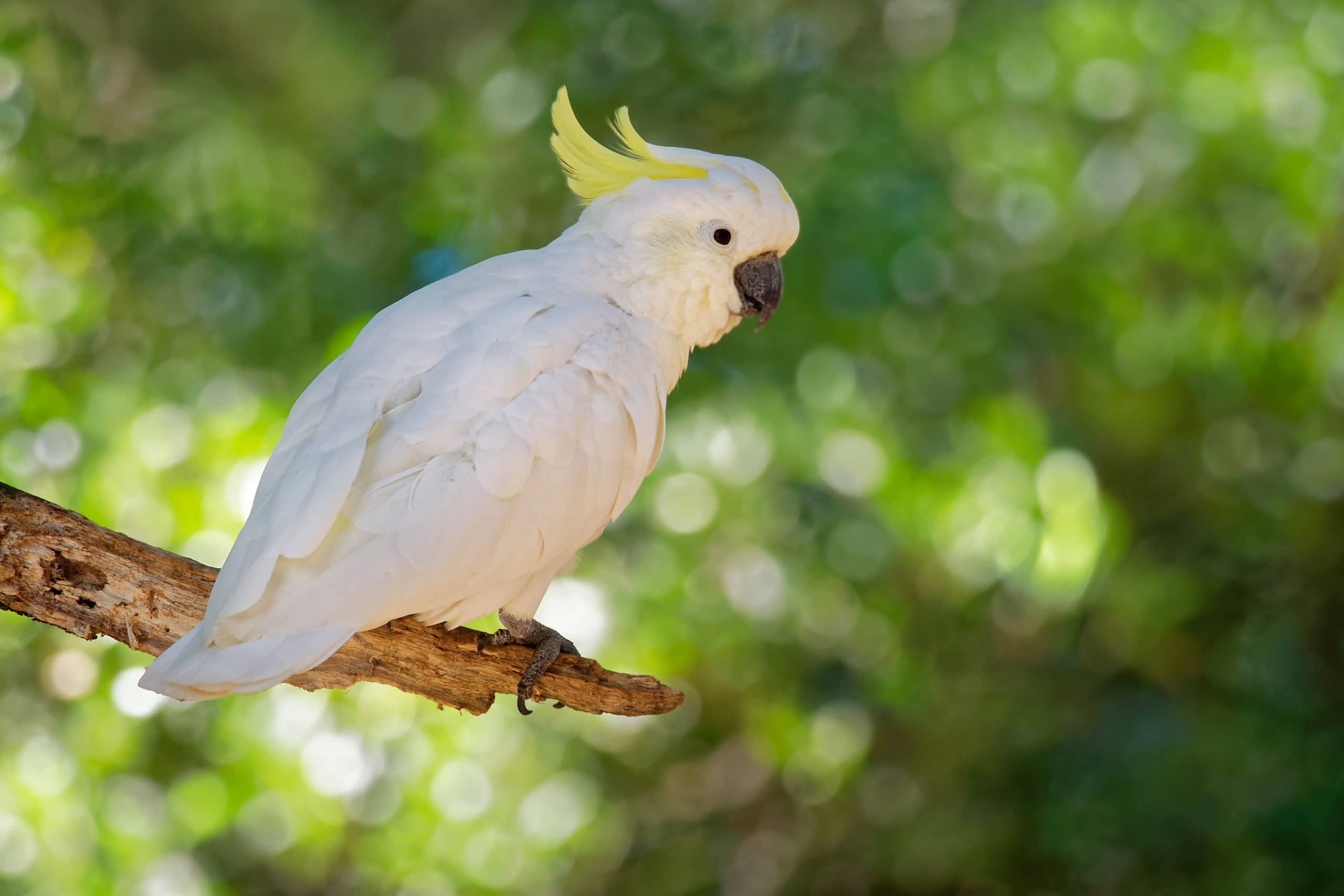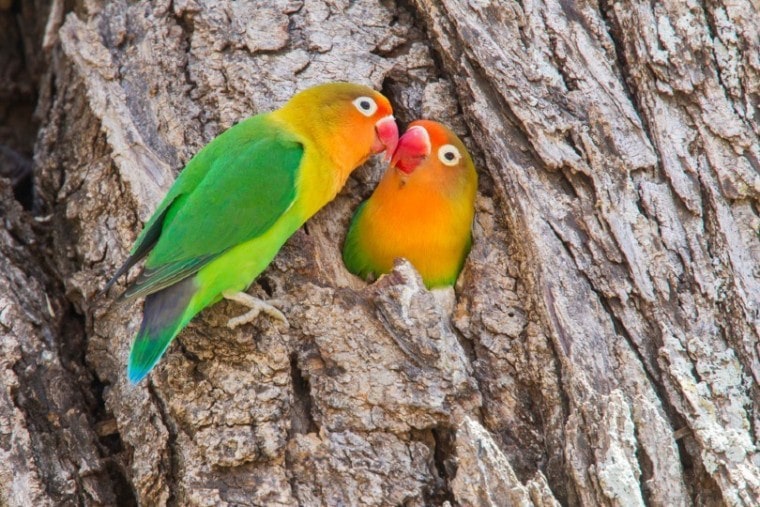
If you’re looking at adding a bird to your home, there’s a good chance that a Lovebird comes to mind. These adorable tiny birds love to hang out together and preen each other, making them a treat to watch.
But just because they’re adorable, that doesn’t guarantee that they make great pets. They can be great pets, but that depends on you.
Is a Lovebird the right pet for your home, and more importantly, are they great pets in general? We break down everything that you need to know here.
Do Lovebirds Make Great Pets?
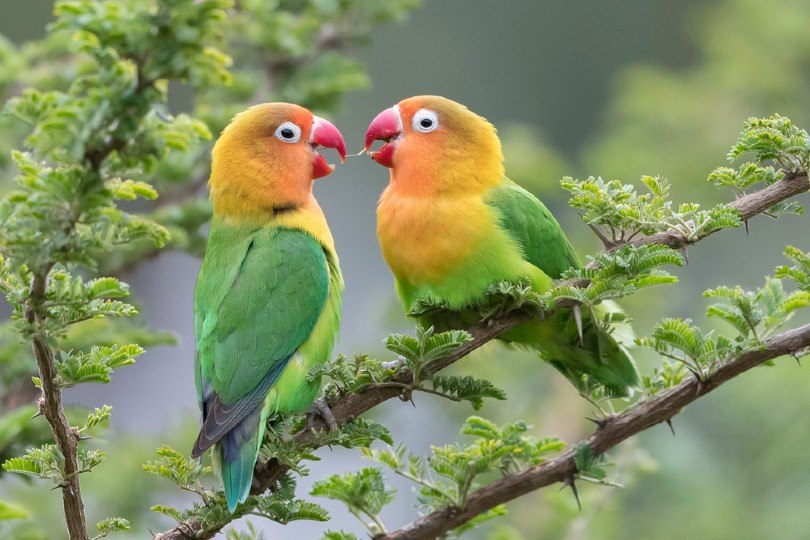
While a Lovebird might not be the first thing that comes to mind when talking about pets, they have more than a few traits that make them great companions.
They have a mild temperament and basic care requirements, and you can even teach them a few tricks. But in the end, determining if a Lovebird makes an excellent pet for you depends on what you’re looking for and how much time you can devote to your bird.
That’s why we broke down each factor about Lovebirds here. This way, you can decide if they’re a good fit for your home.
Lovebirds Temperament
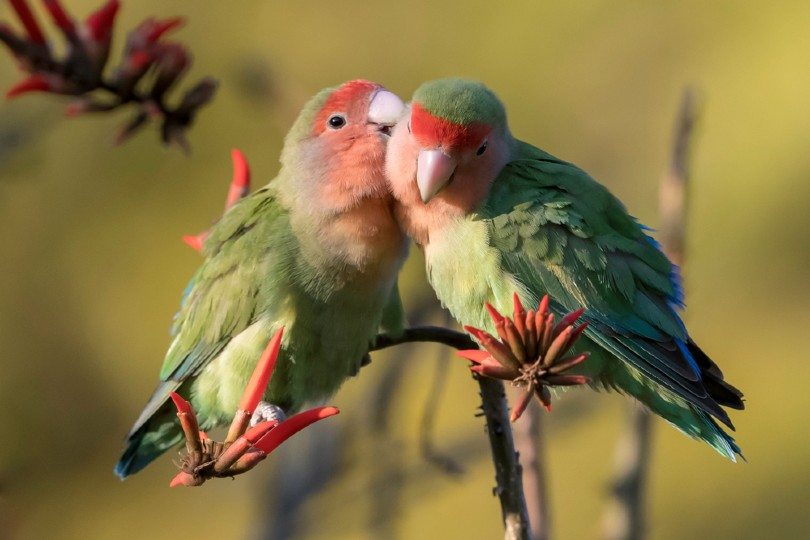
While a Lovebird has an energetic and friendly temperament, it takes a bit of work to get them there. For starters, you need to start when they’re babies and give them constant attention throughout their entire life.
Otherwise, Lovebirds will get a bit nippy and eventually might not let you handle them at all. The key is early handling and consistency. If you have both of these, you’ll get a friendly bird that craves attention and wants to hang out with you just as much as you want to hang out with them!
How Many Lovebirds Do You Need?
There’s this conception out there that you need more than one Lovebird to keep them happy, but the truth is that a Lovebird can be just fine as a solo pet. They’ll bond with you and want constant attention either way, and there’s no evidence that a Lovebird with a companion is any happier than one living alone!
Still, watching your two birds bond and constantly sit next to each other and preen is adorable, so you’ll undoubtedly be missing out if you only adopt one. Just keep in mind that having more than one Lovebird means more work and care, so don’t get in over your head before you know what you’re dealing with.
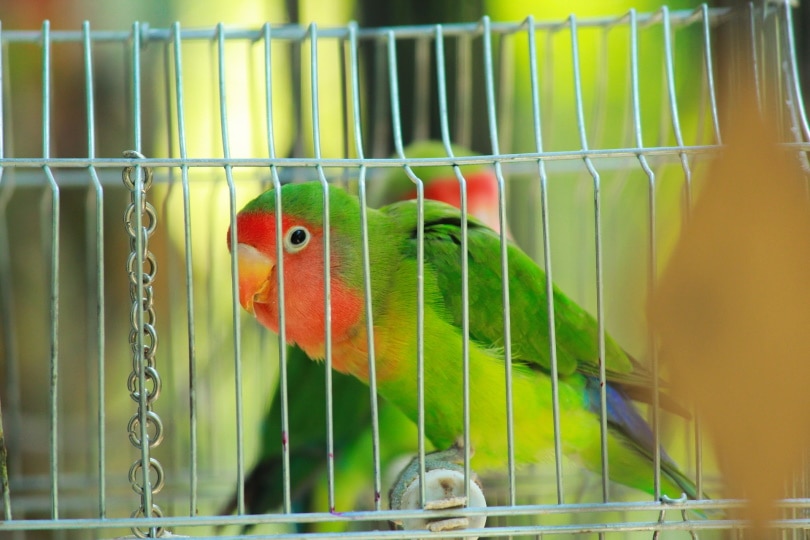
Males vs. Females
There’s little doubt that you’ll have better luck keeping a male tame than a female. Females are far more aggressive and nippy, especially once they reach sexual maturity.
While it’s possible to keep a female tame, it requires a bit more work and practice, so it might be best if you leave the care of female Lovebirds in the hands of a more experienced caretaker.
Minimum Lovebird Cage Size
Lovebirds like to fly from perch to perch, so you need to ensure that they have enough space to flutter around their enclosure. We recommend an enclosure that’s at least 30” x 18” x 18” for a single Lovebird, but you can always get a larger enclosure.
There’s no such thing as a cage that’s too big — the bigger the enclosure, the happier your Lovebirds will be! However, it’s essential to ensure that the bar spacing is less than 5/8”.
Too much space between the bars can lead to your bird getting stuck, and that can lead to serious and potentially fatal injuries.
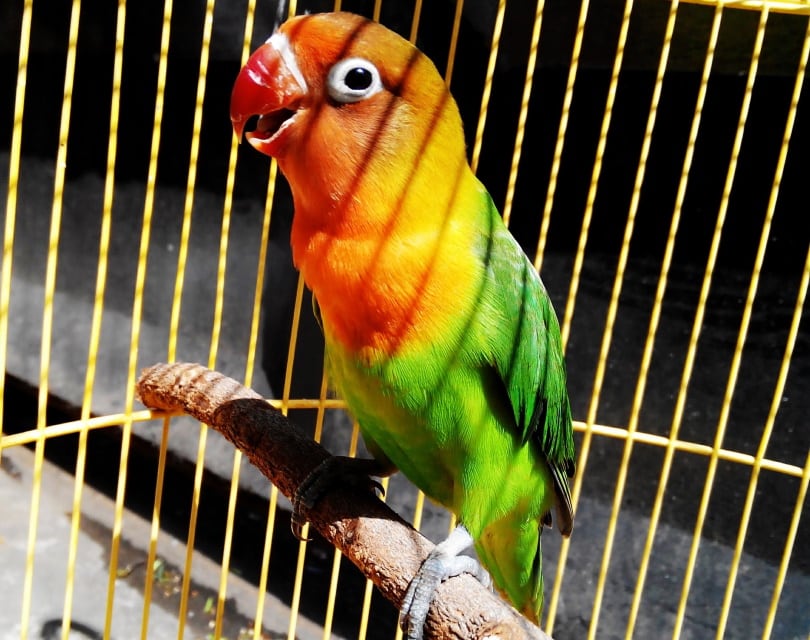
Basic Lovebird Accessories
Every Lovebird needs a few accessories inside their cage for a happy and healthy life. That’s why we broke down a few of the essentials here.
Perches
Lovebirds love sitting on perches and flying between them, so it’s essential to have a few in their enclosures to keep them happy. Ensure that your Lovebird can’t chew through their perches, though, as this can be harmful to your birds and cost you more money to replace them.
Toys
You need to rotate toys in and out of your Lovebird’s enclosure to keep them entertained. Failure to do so will lead to them chewing and playing with things that they shouldn’t, which can turn into a big headache.
Feeding Your Lovebird

Lovebirds eat fresh fruits and vegetables, meaning you don’t need to worry about spending a ton of money on new or complex foods. This is a significant perk to owning a Lovebird as a pet.
Training a Lovebird
While Lovebirds might not be able to learn as many tricks as some other parrot species, that doesn’t mean you can’t teach them a thing or two. You can train them to sit on your hands, make noises, and do a litany of other small tricks.
Final Thoughts
If you have extra time to spare and want to spend it bonding with a pet, a Lovebird makes a great choice. Just keep in mind that they need your attention every day, which makes them a needy pet.
Lovebirds can live anywhere from 10 to 15 years, so you’re not making a short-term investment. But if you have the time and the patience, a Lovebird can make an excellent pet for your home!
Featured Image Credit: Danita Delimont, Shutterstock


